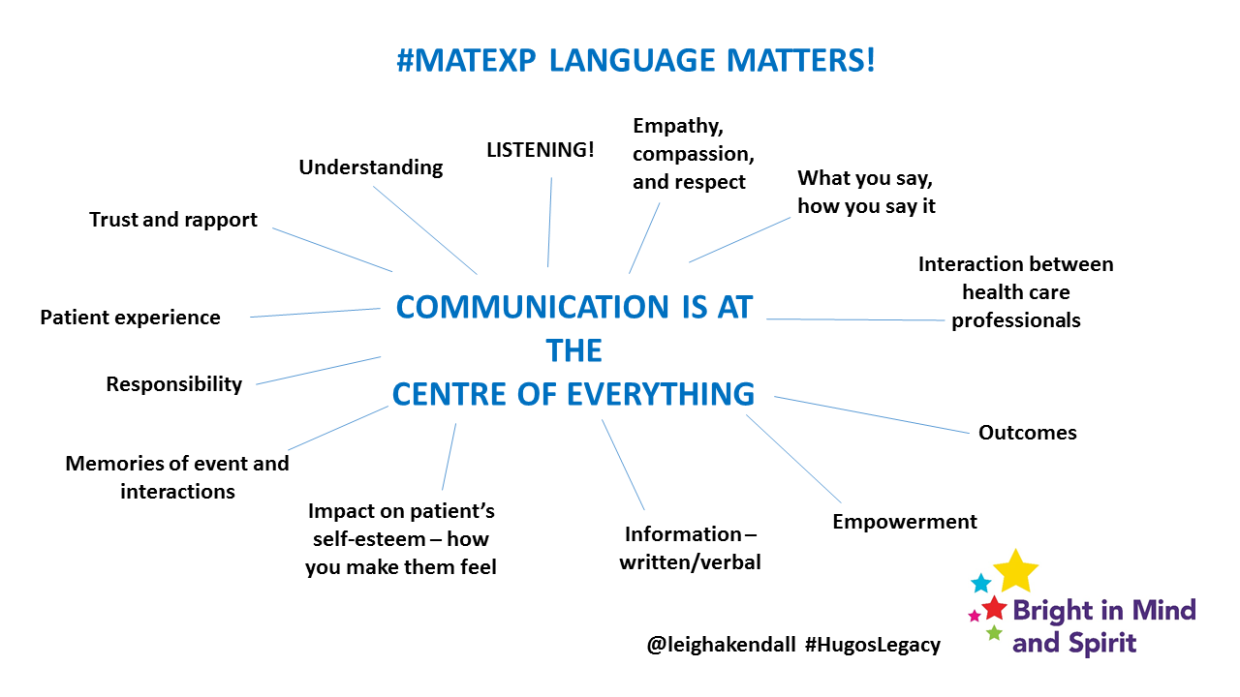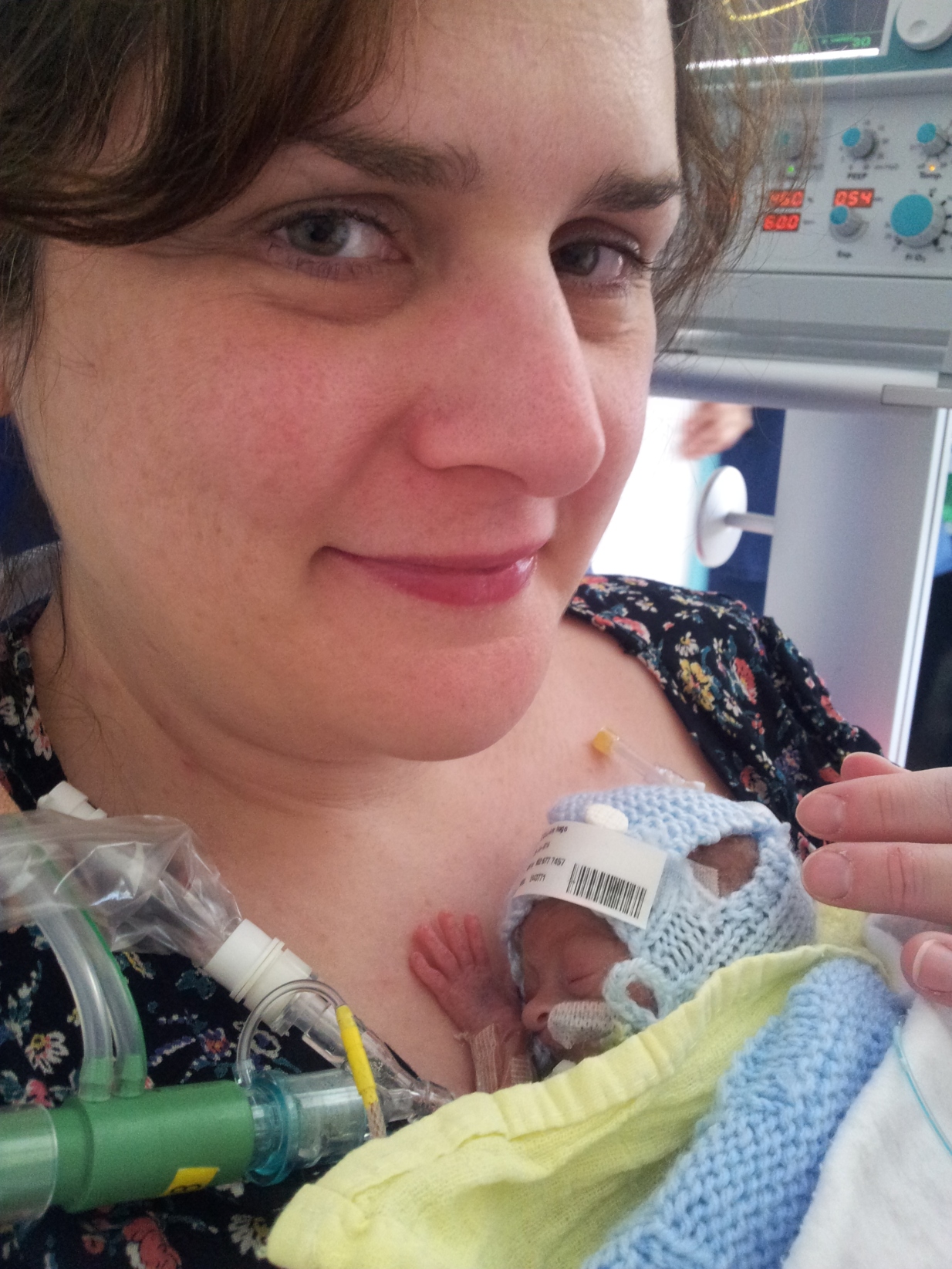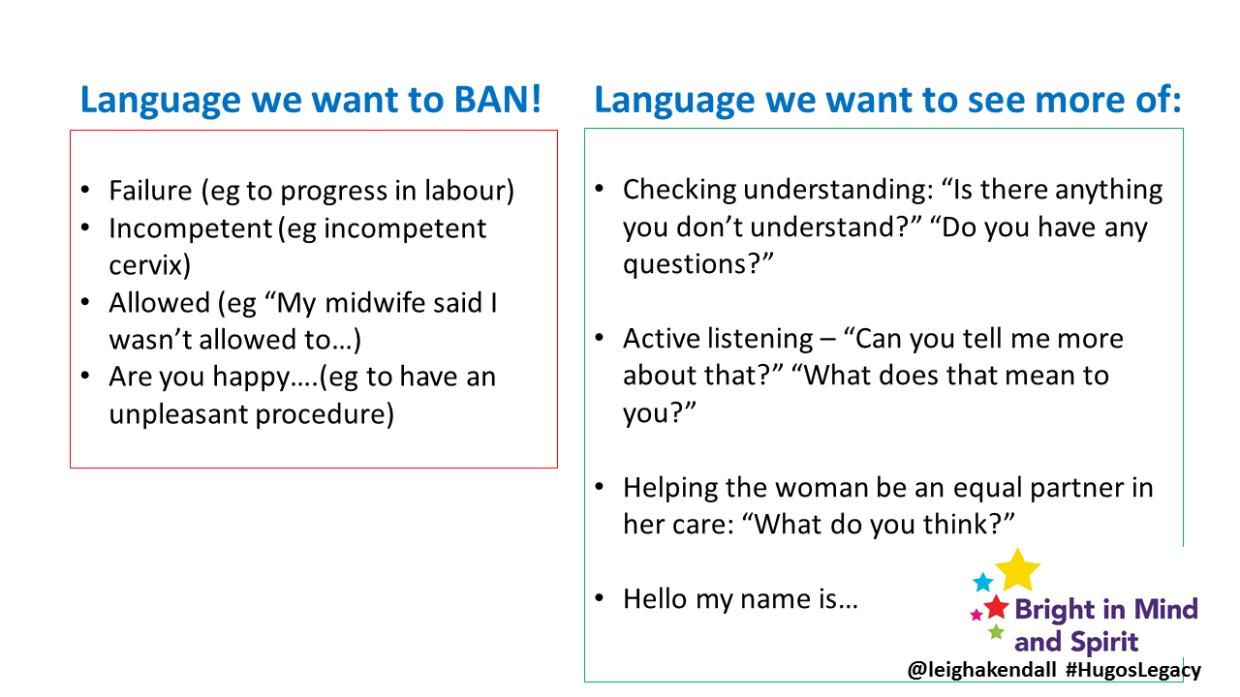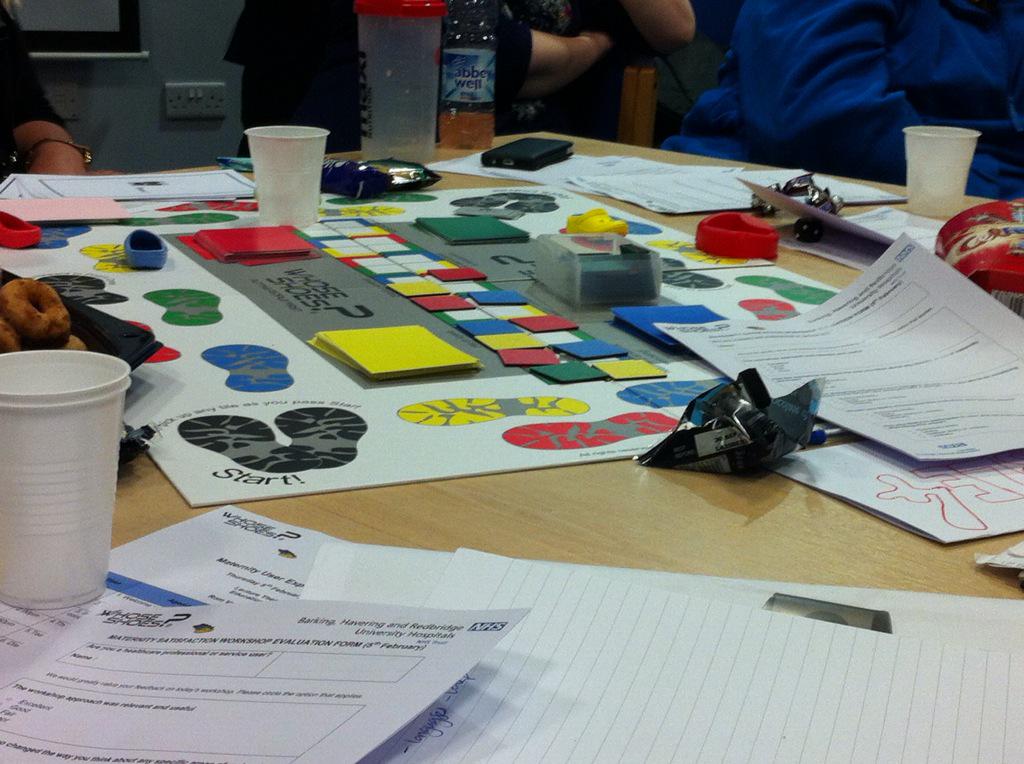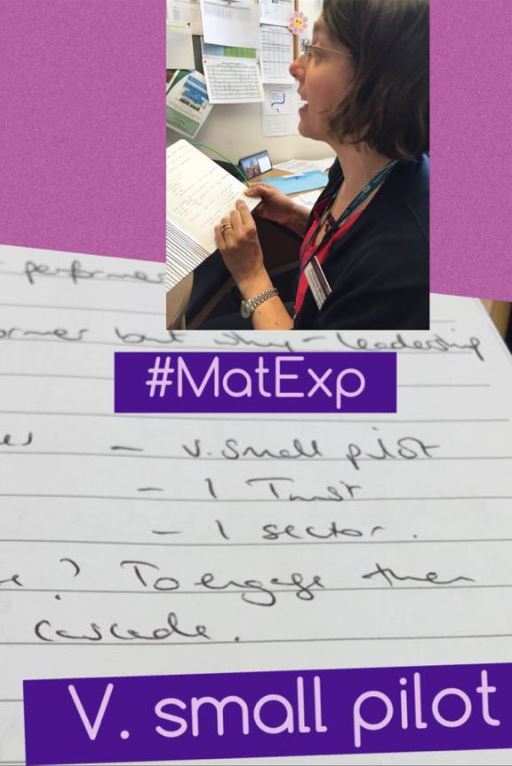As one of two breastfeeding champions for the NHS Change Day MatExp Campaign, I find myself talking a lot about maternity services. It is strange one for me, as although I speak to mums all the time about their maternity experiences, I actually have very little personal knowledge of giving birth on the NHS. With my first baby, I knew from the start that I wanted a homebirth. I had been following a homebirth email forum since before I got pregnant and had gained the impression that the NHS would make my life as difficult as possible if I decided to give birth that way (especially as a first time mum) so we opted to use an independent midwife. This was totally the right decision for me as I suffer from anxiety and have issues around loss of control so needed continuity of care and to be able to do things my way.
Second time around we couldn’t afford another IM, so we started out with the NHS. We wanted another homebirth and this time I was fairly confident that I could get the birth I wanted, being a lot more knowledgeable and also having already given birth at home. However, a few weeks in to my pregnancy a friend of mine told me about OnetoOne Midwives. Their service was exactly what I was looking for, and I was lucky that in 2013 I was able to self refer to them from Trafford. The lovely OnetoOne team looked after me from then on.
Sadly, when I was 38 weeks pregnant a routine check of baby’s heartbeat revealed an anomaly, and a week of scans and tests later gave us the diagnosis that our baby had Hypoplastic Left Heart Syndrome. Not only was homebirth off the cards but it wasn’t certain we would take our baby home at all. You can read all about our experiences with David here, but in terms of my #MatExp the staff at St Mary’s Hospital in Manchester were fantastic. I had a c-section, and as everyone was focusing on getting David out and into NICU, it was the most medicalised birth you can imagine, but I still felt respected and cared for, with things being explained to me every step of the way. Special mention goes to midwife Della and anaesthetist Andrew Heck who provided the kind of care that makes any maternity experience a positive one.
So going back to that first birth with my gorgeous big boy Edward, let me tell you my birth story as I wrote it back in 2011:
Birth Story – Edward Calvert enters the world
On Monday 31st January I was 42+1 and we were at the hospital for monitoring. We had agreed to be monitored to make sure that baby and I were still healthy, but knew that we didn’t want to book an induction just yet. We had a scan to check on the function of the placenta and then had 30 minutes of monitoring to check on baby’s heart rate, his movements and my pulse. Our lovely Independent Midwife Verena was with me the whole time, and confirmed that the monitoring showed no problems for either of us. We then had to wait to see a young obstetrician who outlined the hospital’s policy for women who had gone past 42 weeks. She confirmed that she would like to book me in to be induced, or failing that she would like me to come in for daily monitoring.
We confirmed that we understood the reasons for her requests but said that we would prefer to come back for monitoring on the Wednesday, and not to book an induction just yet. She respected our choices but due to her being fairly junior requested that we wait whilst she speak to a consultant. A lovely consultant then came to speak to us, and was more than happy to accept our choices once he had confirmed with us that we understood the situation.
That evening I made a concerted effort to relax and get myself into a good mental place to give birth. Having done a sweep that morning, Verena confirmed that everything was ready for me to go into labour – we just needed some contractions! So I lay down on the day bed in the nursery, put the lights down low, asked Phil to come and sit quietly with me and focused on putting myself into my relaxed state as taught by the hypnobirthing CD. Phil sat and read whilst I relaxed for half an hour.
At the end of that time, I asked Phil to get me a glass of water. No sooner had he left the room than I felt a pop and was pretty convinced that my waters had broken. I waited until he came back just in case I had lots of fluid, but when he helped me to stand up I only had enough fluid to soak a small patch into my jeans. I went to the loo and confirmed that the waters were not a bad colour, nor did they appear to contain any meconium. Phil phoned Verena and she said that most women go into labour within 24 hours of their waters breaking, so things should start to get going any time. This was 9:30pm.
At 10:00pm I felt what I was pretty sure was my first contraction, so I made a tentative note of it. I continued doing a jigsaw puzzle downstairs and just noted each contraction as it came, as at this early stage they weren’t painful. They were regular though, coming every 5 minutes from the start, and Phil phoned Verena to let her know what was happening. The contractions became painful fairly shortly, to the point where I had to concentrate through each one. Phil started filling the birth pool just before midnight, as he knew he could keep it warm so thought it best to make sure it was ready. He then phoned Verena at 12:30am to tell her that my contractions were getting stronger and were lasting around 40 seconds. She arrived at our house with Sara (second midwife) at 1:30am, by which time I was feeling a bit nauseous with the contractions and my back was aching. I was standing in the nursery, leaning on the day bed through the contractions, with my wave music on and watching a slide show of photos on the laptop that I had put together in advance to keep me cheerful!
Verena put the TENS machine on for me and that was beneficial although it felt strange to begin with. She checked me over, blood pressure etc. and also had a listen to baby’s heart. All fine, and my contractions were now a bit more spaced out (this often happens when the midwives arrive!) so Verena told me that I was definitely in early labour but that I wasn’t in ‘established’ labour as yet. She and Sara left at 3:00am and said they’d be back in the morning, but obviously we should call them if anything changed or if we needed support.
I spent the rest of the night kneeling on pillows, leaning against our bed and breathing through each contraction – they were now pretty painful and I was using the TENS machine through each one. I was only comfortable kneeling up, I couldn’t lie down at all, so I was dozing between contractions with my head on the bed. Phil got some sleep in the bed beside me, and I remember looking at him snoozing comfortably and being fairly resentful of how cosy he looked! I was sick a couple of times in the night, and Phil woke up to play pass the parcel with various bowls and receptacles! I woke him finally around 6:00am as I was fed up with dealing with the contractions by myself and I needed some support. We tried putting me in the shower to run warm water over my back, and Phil braced his arm against the tiles and I hung onto him during each contraction. Phil then phoned Verena at 7:30am to say that my contractions were every 3-4 minutes apart and were more intense – we definitely needed her to come back! Verena said that I could get into the pool if I felt it would help, and I got in as soon as I could! Was still only comfortable kneeling up so knelt in the pool, leaning over the side, and hanging on to the handles during contractions. I didn’t want to be touched at all whilst contracting, so poor Phil didn’t really feel like he could offer any comfort, but of course he was being fantastic and very encouraging.
Verena and Sara arrived back at 9:00am and put a warm, wet towel across my back to help with the backache. In my labour notes it says that I looked very relaxed but said that I didn’t feel it – I think I looked relaxed coz I was exhausted and was only awake coz I was contracting! Verena had a listen to baby’s heart – thankfully her equipment was waterproof so she could just pop the device into the pool and have a listen between contractions.
At 9:30am Verena told me that I was in or close to transition, i.e. the change between the first stage of labour and the second stage where you can start to get the baby out! I remember being delighted at hearing that, but am surprised reading the notes that it was 9:30am – I would have thought it was later in the morning that she told me that. You lose all sense of time in labour! Verena gave me a homeopathic remedy to help cope with the backache and exhaustion, and they all encouraged me to drink plenty of water. Unfortunately I couldn’t face much food, which was a shame as I desperately needed the energy.
Just before 11:00am I started to feel the urge to push, and got a bit more vocal during my contractions! Phil and Sara had been doing excellent work keeping the pool water warm and the midwives continued to monitor baby, but all this was background to me as my life was all about the contractions. I had a cup of sweet tea as everyone kept encouraging me to get in anything that could give me some energy. Verena has put down in my labour notes that Cleo the cat turned up outside the nursery door at this point to have a concerned yowl, but she wasn’t allowed in the room. I do remember hearing her make her presence felt! It was around this point that I began to push a little during contractions – not a choice, just something my body felt it was time to do. By 11:30am I was getting a strong urge to push with every contraction.
Ten minutes later, Phil lit some candles and Verena noted they were all getting ready to meet baby. I am of course taking all of these timings from my labour notes – I had very little idea of what was going on and certainly no clue of time! It was all about getting through the contractions and resting as much as possible in between. Verena thought a change of position might help with the pushing, so I stood up in the pool supported by Phil. All the signs were good that baby was ready to come, and everyone was encouraging me to push and telling me how well I was doing. I went back to kneeling in the pool and Verena has put in my notes that I was pushing very effectively. I remember it was bloody hard work!
At 12:30pm Verena gave me another homeopathic remedy to help with the pushing and I continued to use all of my efforts. At 12:50pm Verena has made a note to say that when she was listening to baby’s heart “baby trying to kickbox my hand away as if to say go away, I am coming out!!”. I changed position again so that I was lying on my side in the pool, still with my head on the side – change of position suggested by the midwives as all the efforts at pushing were not getting baby “round the u-bend” as they put it! I then tried squatting in the pool, but complained that the contractions were not long enough to give me enough time to push effectively – I was getting in perhaps three good pushes and then the contraction subsided when I felt I could do with just one more push to make it effective! Verena gave me a homeopathic remedy to assist with this (all of these remedies were with my consent of course).
It was becoming clear that a change was needed as we weren’t progressing despite my best efforts at pushing. I therefore got out of the pool just after 1:30pm – this was incredibly hard as moving during a contraction was impossible so it was finding the time between them to get me out and moving! Phil and Verena half carried me into the bathroom and sat me on the loo, as this is a natural place to push and this is often an option used in homebirth. I told them “he is coming” and I think I must have felt him crowning (i.e. the head pushing its way out) at this point. Unfortunately, although the head started to emerge it then retreated back again (not unusual) which was of course discouraging each time it happened as each time I knew I had to get it back again! The midwives moved me onto all fours on the floor of the bathroom and got some towels ready to catch the baby.
At 1:50pm baby’s head was born – I remember Verena saying “we have eyes, we have a nose, we have a mouth” and I just felt so relieved as I knew his head was finally out and couldn’t go back in again! Verena has noted down that baby was “blowing bubbles” and he looked just like Phil! What I remember very clearly is thinking, okay I have a moment’s respite now before I need to push out his shoulders, and at that point baby decided to have a look around the bathroom. The sensation of him moving his head is indescribable – I think I asked him to stop, or maybe I just thought it, but I didn’t appreciate his enthusiasm at that point!
Three minutes after his head was born the rest of baby emerged – he had his hand up by his face which could explain why pushing him out had been such hard work. He lay on the floor looking up at me, I was on all fours looking down at him and both of us were a little stunned! He needed a bit of a rub with the towels to get him going, and then he cried and was clearly fine and healthy. Verena asked if I wanted to hold him, and I realized that yes I did – it hadn’t occurred to me, I was too stunned!
Baby and I had some skin-to-skin time and the midwives helped me to sit up on the toilet, as I had been kneeling up almost continuously since the night before and my legs were shaking and exhausted. Unfortunately, as I moved to sit up there was a gush of blood – nothing to cause concern, but it did make a pretty effective mess of the bathroom. Thank goodness we were in a room that was easy to clean! Verena took some photos of me and baby, and of Phil with the two of us – these pics will never see the light of day as I look unbelievably awful – but I also look pretty happy!
The cord stopped pulsating but I felt a bit dizzy so they helped me to lie down on some towels and pillows on the landing, still with baby cuddled up with me, and they then tied the cord with our homemade cord ties. Phil cut the cord and said “I declare this baby open” – he was in very high spirits! Sara had made tea and brought up some biscuits so we all had a snack – she hadn’t been able to get in the bathroom as Phil and Verena were in there with me so she missed the actual birth, but could hear it all happening from outside the door! Whilst I had a nibble of something to eat Phil had his first cuddle with baby… and we agreed to call him Edward.
Phil had taken off his T-shirt so he could have skin-to-skin with Edward, and Verena was attending to me as I still needed to birth the placenta. I was contracting slightly and Verena was asking me if I could push out the placenta, but bizarrely I had completely lost the notion of how to push! I just couldn’t work out how to do it! Verena moved me into a couple of different positions again, but by 2:45pm the placenta still hadn’t arrived, so I agreed to the syntometrine injection to encourage the process. Verena gave me the injection and then the placenta arrived about a minute later, so it would have come of its own accord anyway but there you go. I didn’t suffer any nausea with the syntometrine so no harm done.
Verena then helped me to have a quick shower, followed by me being helped into bed – bliss! Verena examined me and said that I had a small tear but that I didn’t need any stitches. By 3:30pm Verena had helped me to latch on Edward for his first feed, whilst lying together in the bed. Very special moment. Phil was making sure everyone had refreshments and they were all encouraging me to have orange juice and things rich in iron due to my blood loss. Verena asked if I wanted to eat a little of the placenta, which I know sounds gross, but I had considered it prior to labour. I agreed as it is a very iron-rich product, and Verena gave me three or four tiny pieces that I washed down with water.
Edward was weighed and checked over – he came in at 8lbs 13oz. Verena and Sara made sure we were all happy and healthy, gave us some advice for the first night, reassured us they would be back tomorrow then they left the house just before 5:00pm. The Calvert family were left together and couldn’t have been happier.
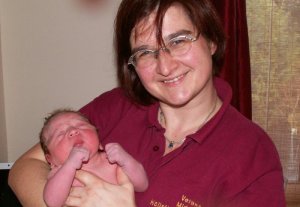
Helen Calvert. 2015.





